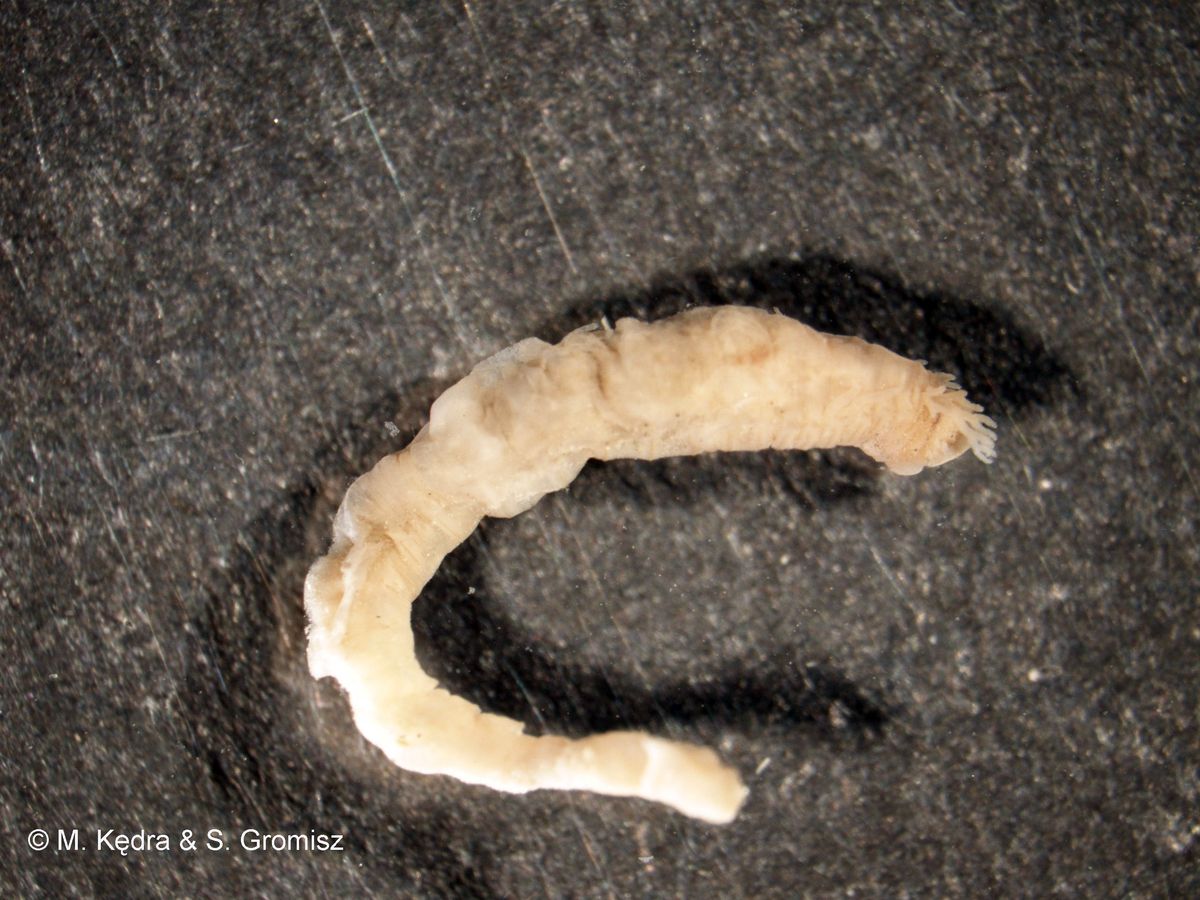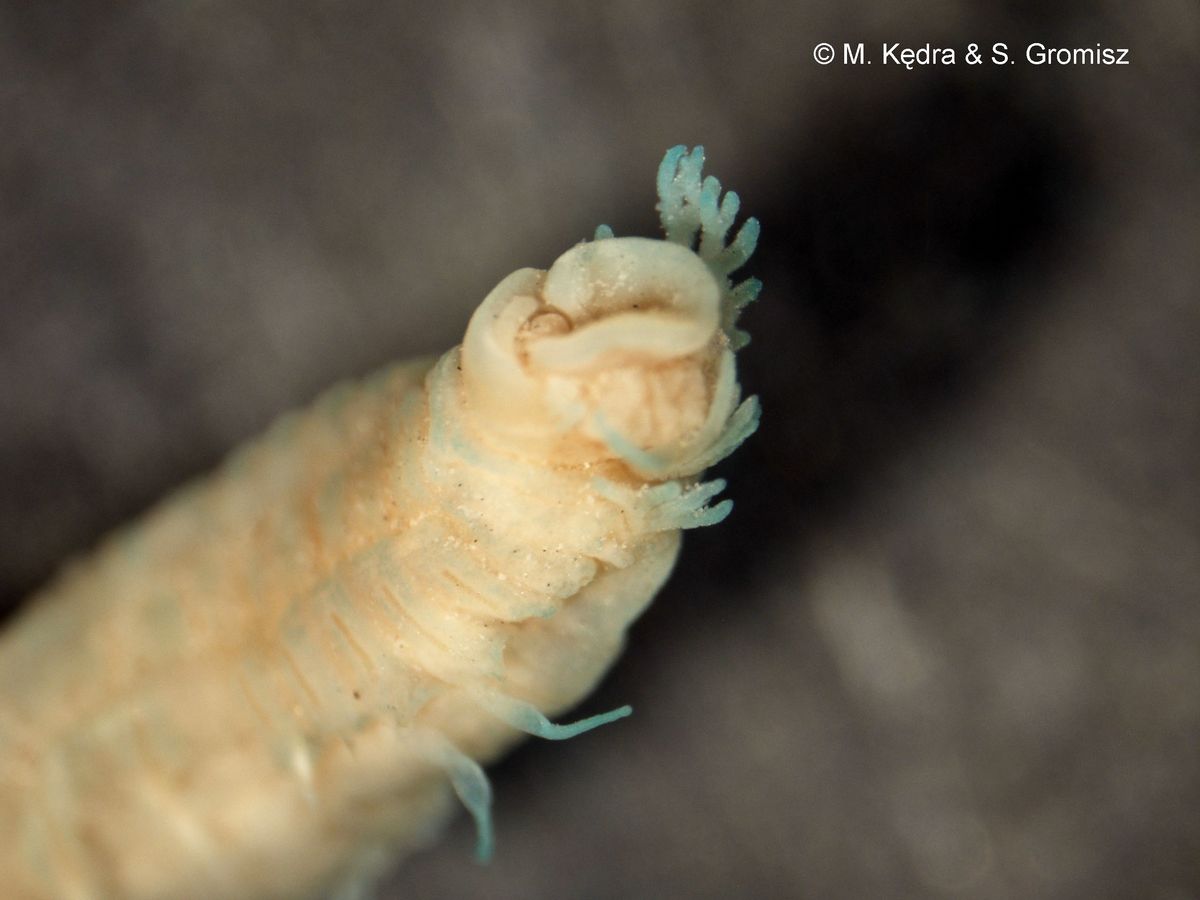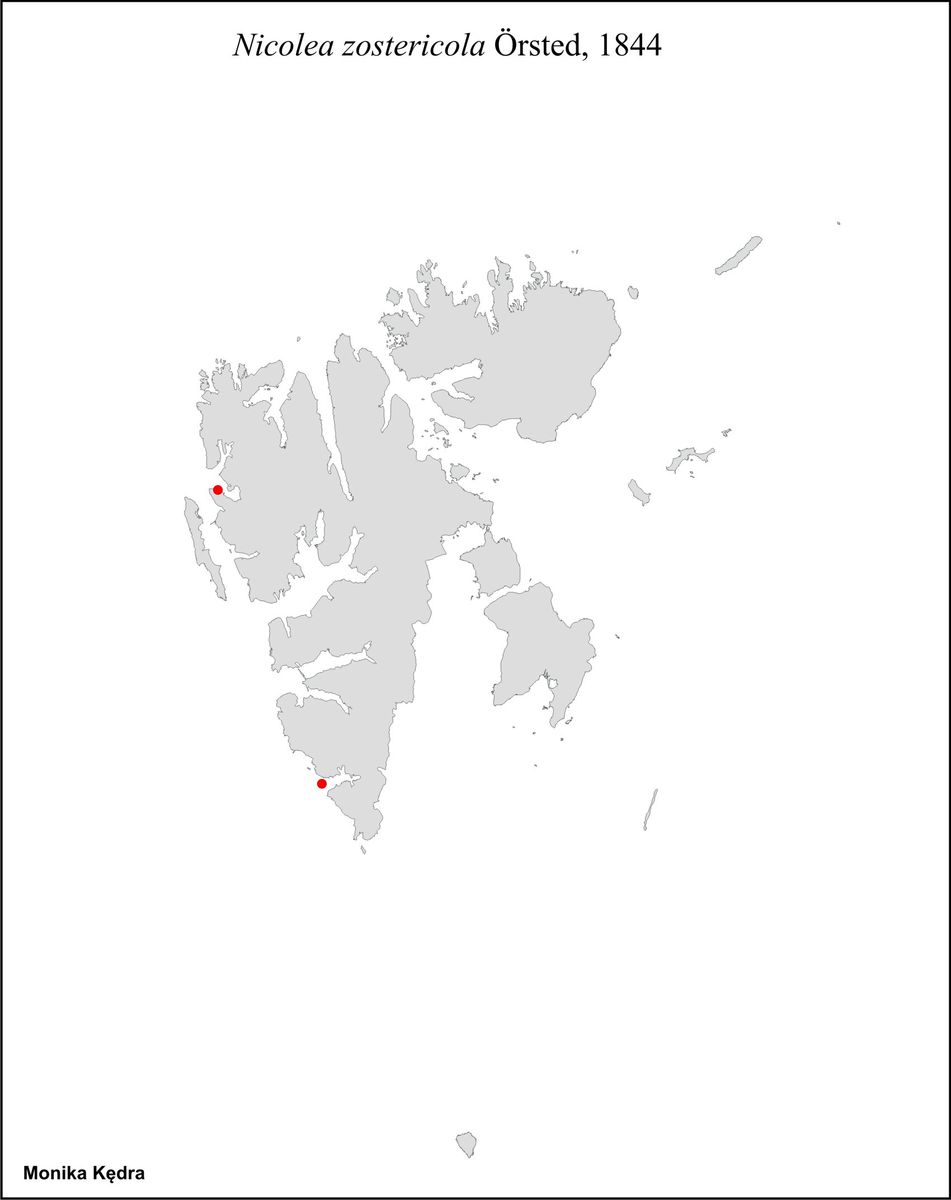Nicolea zostericola Örsted, 1844

|

|

|
Terebella zostericola Oersted, 1844 in Grube, 1860
Nicolea arctica Malmgren, 1866
Amphitrite zostericola Tauber, 1879
Nicolea zostericola Fauvel, 1927
Distinguishing characteristics
Two pair of dichotomous branchiae (short steams, anterior one longer and more branched).
Uncini from the 2nd chaetigerous segment.
15 chaetigerous thoracic segments.
Species description
Body small and slender. Tentacles numerous, long and thick. Upper lip thick, curving around mouth and covering it dorsally and laterally. Many eyespots. Branchiae dichotomous with short stems, anterior ones not much longer but more branched then the posterior ones. 15 thoracic segments with capillary chaetae, the posterior 14 ones with uncinigerous tori. Uncini in double rows on segments 11 – 20. Pygidium with smooth or finely crenulate edge. Tube – a thin, soft layer secretion incrusted with sand grains and detritus.
Size
Up to 70 mm long.
Color
Alive pink or light brown, red stomach visible through the epidermis.
In alcohol pale yellow.
Habitat
On coarse or fine sand, sand mixed with mud, pure mud, or with its tube fixed to Zostera, brown or red algae, or hydroids. Also on hard bottoms. Eulittoral to about 500 m.
Mobility
Hemisessile. It fixes its delicate tube to plants or hydroids.
Feeding
Surface deposit feeder.
Facultative suspension feeder.
Life cycle
Breeding takes place in spring, between March and June. The males leave their tubes to find the females. Sperm is spawned first, eggs some minutes after in four strings from each side of the females. The fertilized ova are then surrounded by a secretion cocoon (size about 2x3 mm) which is fixed to the tube or to algae or hydroids. The larvae will start their benthic life directly without passing a pelagic sage.
Distribution
Its distribution is uncertain due to confusion with Nicolea venustula.
Northeast Atlantic, North American Atlantic, West Greenland, Canadian Arctic, Novaya Zemlya, Siberian Arctic, Bering Sea, Sea of Okhotsk, Japan Sea, North American Pacific.

